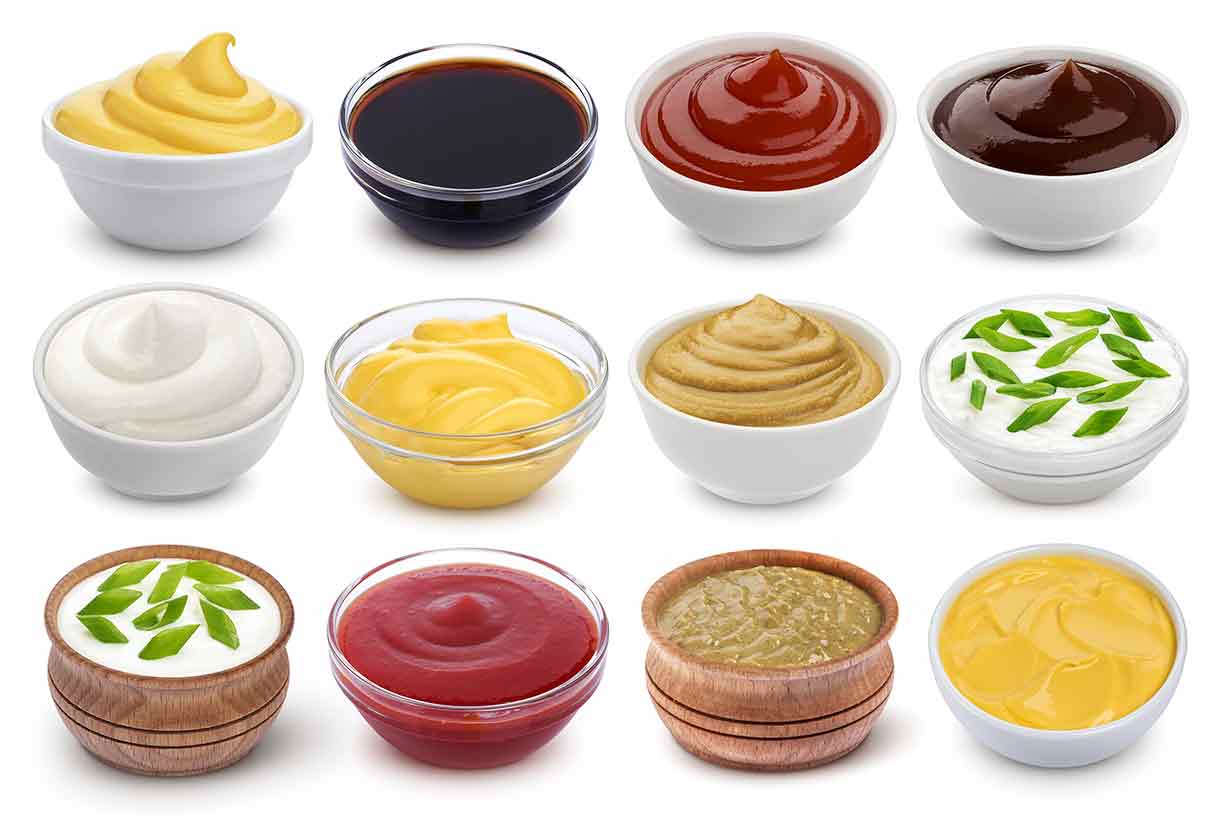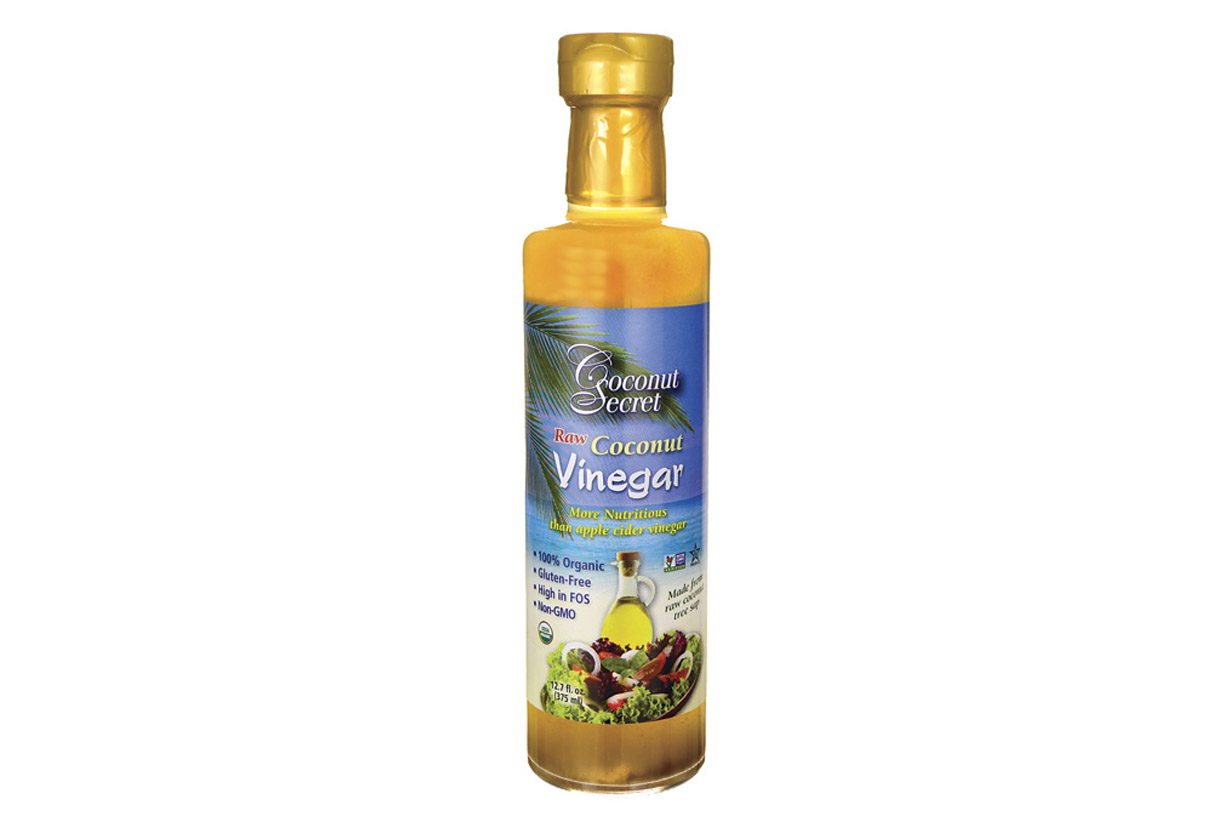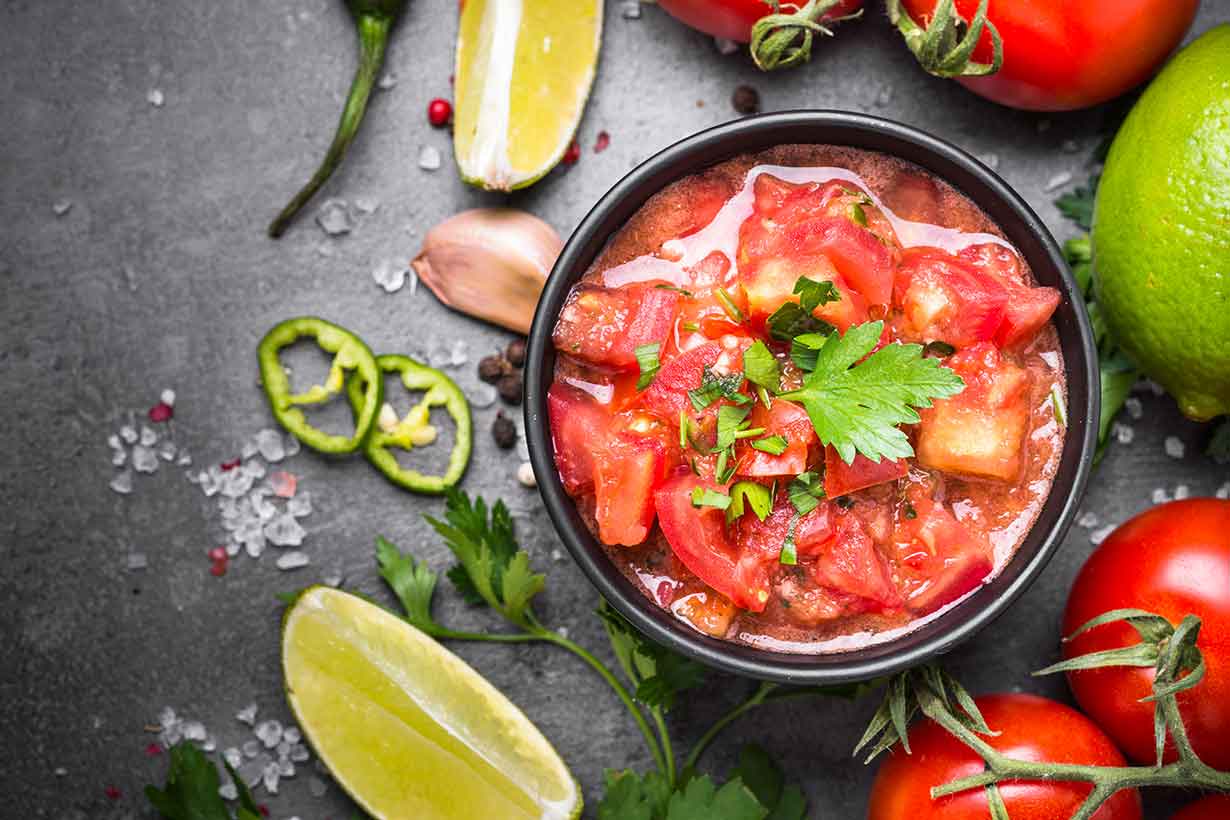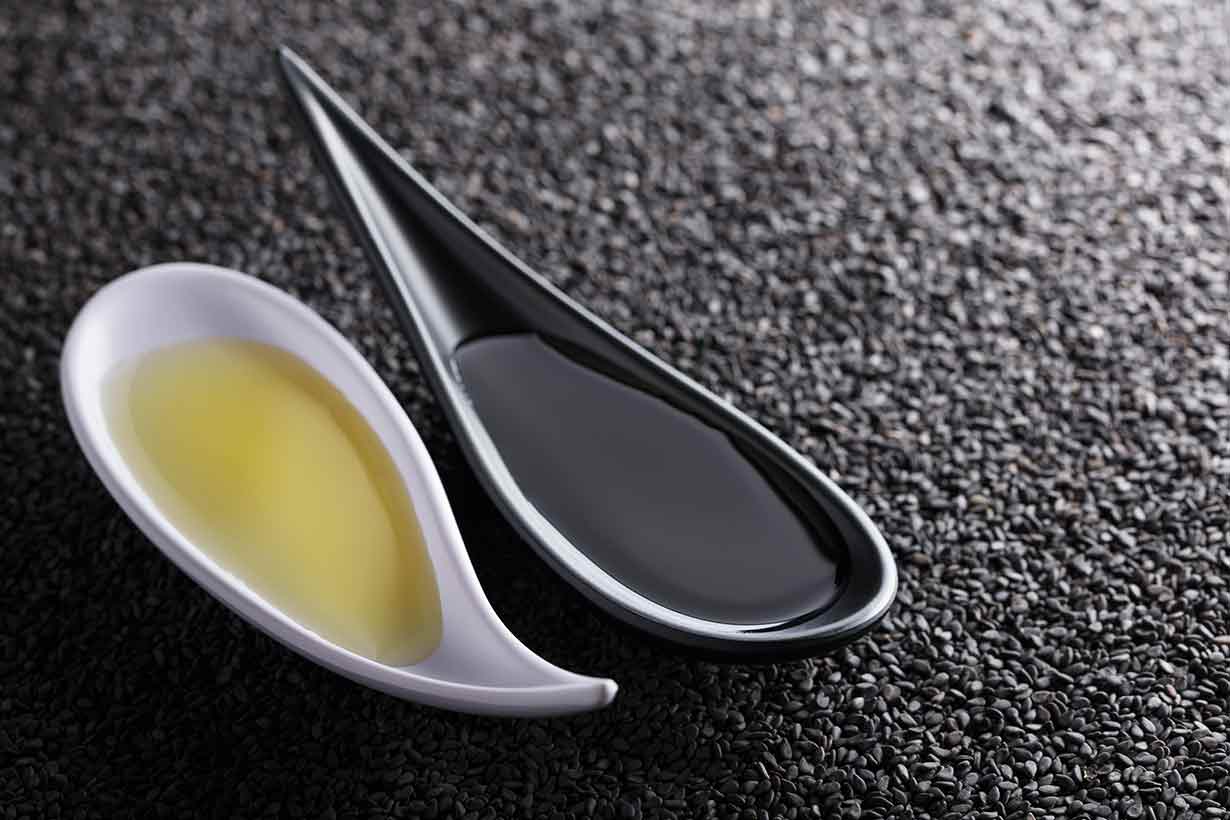Soy sauce is a delicious condiment that enhances the flavor of numerous dishes.
However, there are legitimate reasons why some individuals may wish to avoid soy sauce.
For those seeking a different option, this article presents 11 soy sauce alternatives to try.

Table of contents
Why Might Some People Want a Soy Sauce Replacement?
There are several reasons why some individuals may wish to find a substitute for soy sauce.
Firstly, a soy allergy may be one of the most common reasons. Furthermore, allergy to soy sauce itself, in individuals not allergic to soy, has been recorded in some rare cases (1, 2, 3, 4).
Secondly, many soy sauces also contain wheat, another common allergen. Since wheat also contains gluten, it is unsuitable for those with celiac disease (gluten intolerance) (5, 6).
Lastly, soy sauce has significant sodium content that can affect blood pressure levels. For example, high-quality studies have shown consistent dose-response reductions in blood pressure from sodium reduction trials (7, 8).
Therefore, people watching their salt intake may wish to find a lower-sodium option.
Soy Sauce Alternatives
Here are some soy sauce alternatives that might be viable options, alongside a summary of their nutritional details and pros and cons.
1) Coconut Aminos
Coconut Aminos is an interesting yet little-known alternative to soy sauce.
What Is It?
Coconut Aminos is a salty sauce similar to soy sauce, and it is made from fermented coconut sap.
The flavor is a little bit different and hard to describe. However, it has the ‘umami’ characteristics of soy sauce and tastes somewhat similar.
How Is It Made?
According to the producer, the sap is obtained from the coconut tree, salted, and left to age. Over time, the sap ferments and becomes the liquid we find in ‘Coconut Aminos.’
Why Use It?
Coconut Aminos contains neither soy nor wheat, making it a suitable choice for those with soy or wheat allergies.
Additionally, Coconut Aminos has a much lower sodium content than soy sauce.
While regular soy sauce contains 291mg sodium per teaspoon, coconut Aminos has only 90mg (9, 10).
How To Use It
Intended as a direct replacement for soy sauce, people can use Coconut Aminos in the same ways:
- As a dip
- In stir-fries
- With sushi
- For adding flavor to various dishes
Ingredients
Coconut Aminos contains the following ingredients (10):
- Coconut sap
- Sea salt
Nutritional Data
Per teaspoon (5g) serving, Coconut Aminos provides (10):
- Calories: 5 kcal
- Carbohydrates: 1.0g
- Fat: 0g
- Protein: 0g
- Sodium: 90 mg
The values per tablespoon are not available in a nutrition database. However, they will be approximately three times this amount.
For more information on Coconut Aminos, see this guide
2) Fish Sauce
Fish sauce is a popular condiment in Asian cuisine, produced from the salting and fermentation of small fish.
Anchovies tend to be a common fish used for producing fish sauce.
After the salting of small fish, the development of enzymes in the fish and bacteria drive a fermentation process that breaks down the fish. After approximately four months onwards, a liquid fish extract (fish sauce) is obtained in the fermentation tank (11).
People often use fish sauce alongside soy sauce in various Asian-inspired dishes.
However, it could also be a taste-enhancing replacement when a recipe calls for soy sauce.
Fish sauce contains no soy or wheat.
However, it is not a lower sodium option. According to the USDA, fish sauce contains 392mg sodium per 5-gram teaspoon (12).
Although the ingredient profile can vary, a basic fish sauce will consist of two ingredients:
- Fish
- Salt
Per tablespoon (16g) serving, fish sauce provides (12):
- Calories: 6 kcal
- Carbohydrates: 0.66g
- Fat: <0.01g
- Protein: 0.91g
- Sodium: 1413 mg
For more information on the nutritional values, benefits and downsides of using fish sauce, see this comprehensive guide:
Fish Sauce: Nutrition, Benefits, Downsides, and More
3) Hoisin sauce
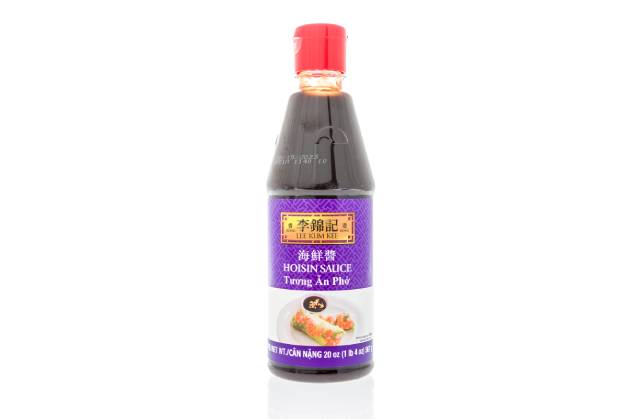
Hoisin sauce is a popular condiment with a sweet and salty taste.
What Is It?
Like soy sauce, fermented soybeans are the main ingredient in hoisin sauce. However, the sauce is much thicker in consistency and contains various additional ingredients.
Hoisin sauce contains sugars and thus has a much sweeter taste than soy sauce.
How Is It Made?
The production process of hoisin sauce involves mixing fermented soybean paste with various spices, sweeteners, and other additional ingredients.
Why Use It?
Some fish sauce may not contain wheat. Therefore, wheat-free variants will suit individuals with wheat or gluten allergies.
This varies from brand to brand, so it is crucial to inspect the ingredients label closely.
Hoisin sauce is also thicker than soy sauce, making it ideal for marinating food.
Lastly, although it does contain salt, hoisin sauce typically has a lower sodium content than soy sauce.
How To Use It
Among its many uses, hoisin sauce is suitable for:
- Adding to soups and stews
- Dips
- Glazing fish, meat or tofu
- Marinades
- Stir-frying
Ingredients
The ingredients profile of hoisin sauce can vary by brand.
However, here are the ingredients of a hoisin sauce brand listed by the USDA (13):
- Sugar
- Soybean paste
- Rice vinegar
- Salted garlic
- Sesame oil
- Salted chili
- Spices
Nutritional Information
Per tablespoon (16g) serving, fish sauce provides (14):
- Calories: 35.2 kcal
- Carbohydrates: 7.06g
- Fat: 0.54g
- Protein: 0.53g
- Sodium: 259 mg
4) Liquid Aminos
Liquid Aminos is marketed as an alternative to soy sauce, yet it is also made from soybeans.
What Is It?
Made by a company called ‘Bragg,’ Liquid Aminos is a non-fermented, soy-based product.
It has a color and appearance that resembles soy sauce, and the taste is somewhat similar.
However, the flavor is not as bold, and the sauce is not as salty.
How Is It Made?
Rather than using a traditional fermentation process, soybeans are treated with some form of acid to release their amino acids.
Unfortunately, the precise manufacturing process is neither published nor public knowledge.
Why Use It?
Two of the main reasons to use Liquid Aminos over soy sauce are as follows:
- It contains no wheat
- Liquid aminos has a lower sodium content than soy sauce
These reasons put Liquid Aminos alongside Coconut Aminos, so personal taste preference may determine the choice.
How To Use It
The marketing of Liquid Aminos positions the sauce as a direct replacement for soy sauce.
Thus, it can be used in the same ways: dips, dressings, marinades, stir-fries, and more.
Ingredients
Liquid Aminos contains only two ingredients as sold (15):
- Soybeans
- Water
Nutritional Information
Per 5-ml teaspoon serving, Liquid Aminos provides (15):
- Calories: 5 kcal
- Carbohydrates: 0g
- Fat: 0g
- Protein: 1g
- Sodium: 310 mg
Once again, a tablespoon serving of Liquid Aminos would provide values approximately three times higher.
5) Low-Sodium Soy Sauce
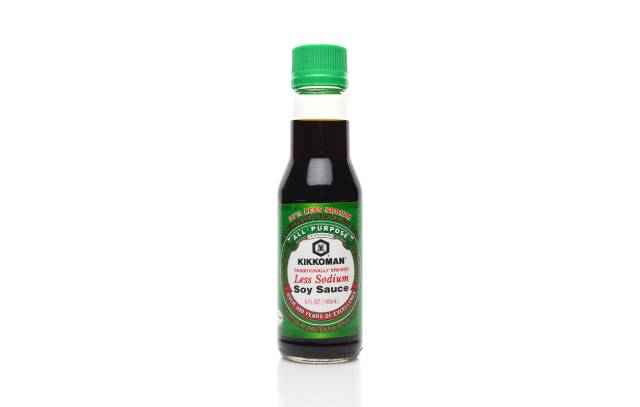
The amount of salt in soy sauce can vary by product, and reduced-sodium options are freely available.
What Is It?
The low-sodium soy sauce production process is mostly the same as regular soy sauce.
However, the difference comes after brewing when the manufacturers remove approximately 35-40% of the salt content.
Low-sodium soy sauces taste similar to regular soy sauce, but they have a lighter, less salty flavor.
How Is It Made?
As mentioned, the production process of low-sodium soy sauce and regular soy sauce is largely the same.
However, the difference comes after brewing when the manufacturers remove approximately 35-40% of the salt content.
Why Use It?
The reasoning behind opting for reduced-sodium soy sauce is clear: to reduce salt intake.
On this note, a randomized controlled trial with 64 male and female participants demonstrated that a low-sodium diet involving low-sodium soy sauce rather than regular soy sauce could have blood pressure benefits. There was a 6.44 mmHg reduction in diastolic blood pressure in the study in those over 40 after following the diet for six weeks (16).
How To Use It
The uses of low-sodium soy sauce are the same as regular soy sauce.
Ingredients
The ingredients of low-sodium soy sauce can vary. However, here are ingredients in the ‘Kikkoman’ brand, listed on the USDA database (17):
- Water
- Soybeans
- Wheat salt
- Lactic acid
- Sodium benzoate
Nutritional Information
A 16ml tablespoon serving of reduced-sodium soy sauce contains (18):
- Calories: 9 kcal
- Carbohydrates: 0.9g
- Fat: 0.05g
- Protein: 1.45g
- Sodium: 576 mg
Once again, a tablespoon serving of Liquid Aminos would provide values approximately three times higher.
6) Maggi Seasoning Sauce
Maggi is a type of soy-free seasoning sauce popular around the world.
What Is It?
Fermented wheat protein is the key ingredient behind Maggi seasoning sauce, also known as ‘Maggi Liquid Seasoning.’
This condiment contains no soy yet arguably has a bolder, richer flavor than soy sauce alongside the same umami notes. The two sauces also look very similar, with Maggi seasoning sauce being a little thicker.
Also, several different ‘Maggi’ sauces are available, including ‘hot & spicy’ and ‘hot & sweet’ varieties.
How Is It Made?
Maggi seasoning sauce has a similar production (and fermentation) process to soy sauce.
The only difference is that it involves the fermentation of wheat protein rather than soy protein.
Why Use It?
Maggi seasoning is an excellent alternative to soy sauce for those with a soy allergy.
Firstly, Maggi contains no soy. Secondly, it has the same distinct flavors
How To Use It
People can use Maggi seasoning sauce in the same ways as soy sauce.
Use it as a dip, dressing, marinade, drizzle some on food, and use in stir-fries/other dishes.
Ingredients
The ingredients of Maggi seasoning sauce include (19):
- Water
- Iodized salt
- Wheat gluten
- Roasted wheat flour
- Sugar
- Caramel color
- Acetic acid
- Wheat bran
- Artificial flavor
- Disodium guanylate
- Disodium inosinate
- Dextrose
Nutritional Information
A 5-ml teaspoon serving size of Maggi seasoning sauce contains (19):
- Calories: 0 kcal
- Carbohydrates: <1g
- Fat: 0g
- Protein: 0g
- Sodium: 500 mg
7) Oyster Sauce
Oyster sauce is a thick and flavorful sauce featuring many Chinese and Asian dishes.
What Is It?
Oyster sauce can have numerous different ingredients depending on the specific product.
However, ‘oyster sauce’ refers to sauces produced with cooked oysters or oyster extract.
Some oyster sauces may also contain soy sauce.
How Is It Made?
The traditional method of making oyster sauce involved boiling oysters.
However, most commercial oyster sauces now use oyster extract, mixed with various ingredients, and then cooked.
Why Use It?
There are several reasons why people may wish to use oyster sauce as a soy sauce alternative.
Firstly, the taste is slightly different, and oyster sauce is both sweet and salty (but less salty than soy sauce).
The lower sodium content of oyster sauce relative to soy sauce could also influence the choice between the two.
Secondly, some oyster sauces may not contain wheat or soy, depending on the brand. Thus, they may be suitable for people with allergies to wheat or soy if the allergen is not part of the ingredients.
However, the ingredients profile of oyster sauce can vary, so it is essential to check the label carefully.
How To Use It
Oyster sauce is often used in stir-fries and mixed into finished cooked dishes.
However, people can use oyster sauce with more versatility, similar to soy sauce.
Ingredients
As previously mentioned, the exact ingredients of oyster sauce will differ from brand to brand.
However, here are the ingredients for the oyster sauce brand ‘Lee Kum Kee Co Ltd’ (20):
- Water
- Sugar
- Salt
- Oyster extract
- Monosodium glutamate
- Modified corn starch
- Wheat flour
- Caramel color
Nutritional Information
Based on USDA data, a 16-ml tablespoon serving of oyster sauce provides (21):
- Calories: 8 kcal
- Carbohydrates: 1.74g
- Fat: 0.04g
- Protein: 0.22g
- Sodium: 437 mg
8) Ponzu sauce
Ponzu sauce is a refreshing Japanese condiment with a sour, sweet, and umami flavor.
It can contain a range of different ingredients, but a traditional ponzu sauce will contain soy sauce, mirin, vinegar, katsuobushi flakes, kombu, and citrus juice.
Since soy sauce is the predominant ingredient, the two have some similarities in taste. However, ponzu sauce has a wider range of flavor notes due to its diverse ingredients.
As an alternative to soy sauce, ponzu sauce is used in very similar ways, such as dips, marinades, dressings, and stir-fries.
A 16-gram tablespoon serving of ponzu sauce has (22):
- Calories: 10 kcal
- Carbohydrates: 1.87g
- Fat: 0.05g
- Protein: 0.60g
- Sodium: 400 mg
See this full guide to ponzu sauce for more information on its nutritional values, characteristics, and usage ideas:
What Is Ponzu Sauce? Characteristics, Nutrition Facts, Uses
9) Tamari
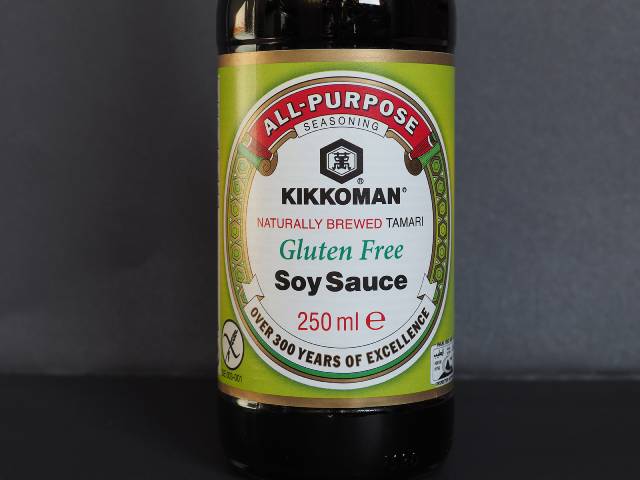
Traditional tamari sauce is a specific soy sauce made from fermented soybeans.
What Is It?
While many ‘shoyu’ (regular soy sauce) products contain wheat, traditional tamari soy sauce does not.
The tamari soy sauce products will either contain no wheat or minimal amounts.
Similar to all soy sauce varieties, the salt content of tamari can vary from bottle to bottle; reduced-sodium types are available.
Tamari is a Japanese form of soy sauce.
How Is It Made?
Traditional tamari soy sauce is a by-product of miso production.
According to one of the biggest producers of tamari called San-J, here is what the process looks like (23):
- Soybeans are soaked in water and then cppled in steam cookers
- The cooked beans are then formed into clumps called ‘nuggets’
- Next, these nuggests enter into a temparature and humidity controlled chamber
- Over the next two days, they develop a mold and become what’s known as ‘koji’
- After this, this maturedk koji turns into ‘moromi’ after mixing with salt and water. It is then left to age for 4-6 months.
- After this time, the moromi is pressed which provides the tamari sauce. Following a pasteurization and filtering process, the tamari is ready for packing and sale.
Why Use It?
A traditional tamari sauce may not contain wheat, but it is essential to check the ingredients label properly.
For wheat-free products, individuals with wheat or gluten allergies should be able to consume the tamari without issue.
Additionally, tamari tends to have a slightly lighter taste than shoyu (soy and wheat) soy sauce.
How To Use It
Use tamari in the same way as all soy sauce: dips, marinades, with sushi, in stir-fries, and for general seasoning purposes.
Ingredients
Here are the ingredients in a bottle of tamari sauce made by ‘San-J International, Inc’ (23):
- Water
- Soybeans
- Salt
- Alcohol
Nutritional Information
Based on USDA data, an 18g tablespoon serving of tamari soy sauce provides (24):
- Calories: 10.8 kcal
- Carbohydrates: 1.0g
- Fat: 0.02g
- Protein: 1.89g
- Sodium: 1010 mg
10) Teriyaki
Teriyaki is a sauce often used for marinating fish, meat, and tofu.
What Is It?
This sauce contains soy sauce and other ingredients, including garlic, ginger, sugar, and corn starch as a thickener.
As a result, the sauce is both salty and sweet, and it has a thick and gloopy texture.
It is commonly used in Japanese cooking.
Like most soy sauce-based sauces, teriyaki has a high sodium content.
How Is It Made?
The production process of teriyaki sauce is simple.
Ingredients including soy sauce, sugar, garlic, ginger, and more are mixed and cooked together.
Why Use It?
The only real reason to use teriyaki sauce over soy sauce is a taste preference.
Both sauces are high in sodium and may contain wheat, but teriyaki has different taste characteristics.
Teriyaki is sweeter, slightly sticky, and has a thick texture.
How To Use It
The most common usage of teriyaki is to marinate fish or meat in the sauce before broiling or grilling.
Ingredients
Based on USDA data, here is the ingredients profile for teriyaki sauce made by Lee Kum Kee Co. Ltd (25):
- Water
- Sugar
- Salt
- Soybeans
- Modified corn starch
- Tomato paste
- Wheat flour
- Rice cooking wine
- Onion spice
- Dehydrated garlic
- Lactic acid
- Caramel color
- Xanthan gum
- Stevia
- Sodium benzoate
Nutritional Information
Based on USDA data, an 18g tablespoon serving of tamari soy sauce provides (25):
- Calories: 16 kcal
- Carbohydrates: 2.81g
- Fat: 0.004g
- Protein: 1.07g
- Sodium: 689 mg
11) Worcestershire Sauce
As the name may suggest, Worcestershire sauce comes from the city of Worcester in England. It is a flavorful sauce packed with different ingredients.
What Is It?
Worcestershire sauce has an interesting depth of flavor and numerous notes of sweet, salty, sour, and umami.
The different flavors are due to the wide range of ingredients the sauce contains, including fermented anchovies, vinegar, sugar, and salt.
How Is It Made?
This in-depth article explains the production process of Worcestershire sauce:
- Onions and garlic are pickled in malt vinegar for 1-2 years
- Salt-packed anchovies are aged for several months
- When these ingredients are ready, they are mixed together alongside molasses, sugar, salt, tamarind paste, and various herbs and spices#
- The sauce is then left to age for several months.
- Once the maturation is complete, the finished Worcestershire sauce is packed and distributed for sale.
Why Use It?
Worcestershire sauce contains no soy or wheat, so it is suitable for individuals with soy or wheat allergies.
As it does not contain wheat, Worcestershire sauce should also be gluten-free.
Some people may also wish to use it instead of soy sauce due to the unique flavors it brings to food.
The sauce is salty, so it isn’t a good low-sodium replacement for soy sauce.
How To Use It
Adding some Worcestershire sauce to sauces, soups, stews, and stir-fries can enhance the flavor.
Additionally, Worcestershire sauce is an excellent ingredient in marinades for fish and meat.
Interestingly, some cocktails (such as ‘Bloody Mary’) also feature Worcestershire sauce as an ingredient.
Ingredients
According to the USDA, Worcestershire sauce made by Lea Perrins contains the following ingredients (26):
- Distilled white vinegar
- Molasses
- Water
- Sugar
- Onions
- Anchovies
- Salt
- Garlic
- Cloves
- Tamarind extract
- Natural flavorings
- Chili pepper extract
Nutritional Information
A 17-gram tablespoon serving of Worcestershire sauce has the following nutritional values (27):
- Calories: 13.1 kcal
- Carbohydrates: 3.26g
- Fat: 0g
- Protein: 0g
- Sodium: 221 mg
Final Thoughts
We often think of particular food ingredients as ‘essential’ for specific recipes.
However, as shown in this article, many different soy sauce alternatives exist.
All of these sauces have unique characteristics and pros and cons, but just a little of each one can help enhance the flavor of food.


